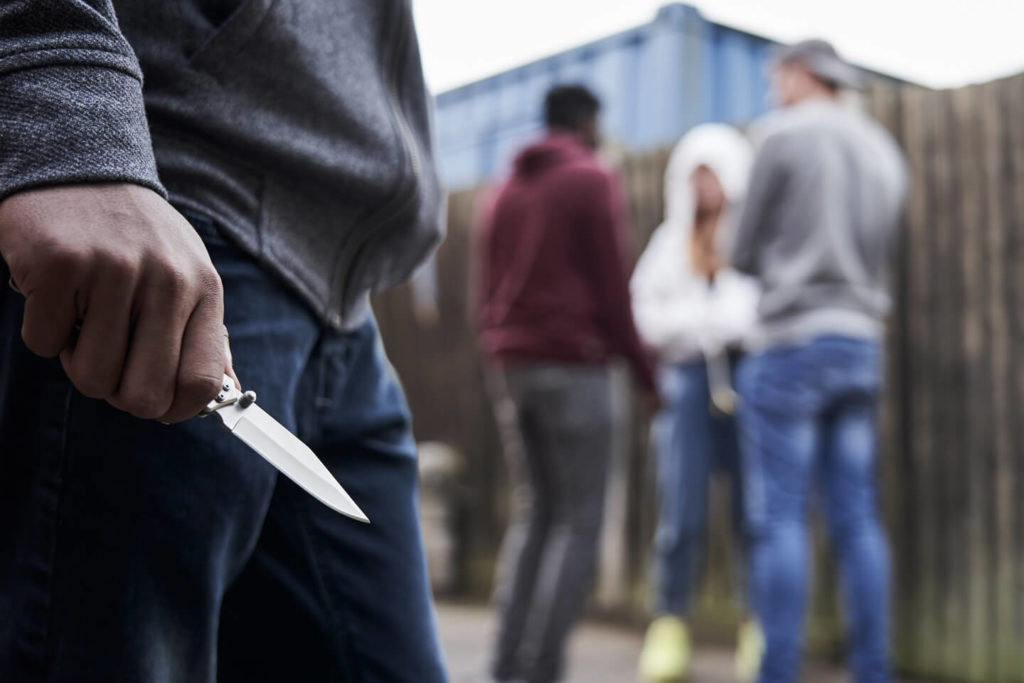The number of offences involving knives or sharp instruments has increased by 30% since 2011 (Sky News). This rising level of knife crime has whipped the media into a frenzy, with knife crime now described as an ‘epidemic’.
Media outlets across the UK are quick to argue that the typical perpetrator is young and working class, painting those involved as criminal teenagers who cannot be controlled. The result of this is a society that is growing fearful of its youths.
The strategies in place for tackling the rising levels of knife crime adopt an epidemical approach that requires strict punishment and harsher prison sentences. It is hoped that this approach will deter young people from getting involved in knife crime. Alternative approaches argue that exposure to psychological and social risk factors from family, peers or at school have been the main causes for increased knife crime and supporting young people is the way forward.
Harmful environments
Loughborough University, in ‘Knife Crime: Children are not the problem’, argue that in order to identify appropriate solutions to children carrying and using knives, society must bring the issue into its proper perspective. It is argued that a complex problem, knife crime is in fact a symptom of a toxic environment which is created around children, who then become both perpetrators and the victims.
We have previously seen the impact that toxic environments can have on why a young person may run away from home. There is also a strong connection between identity and violence, especially in terms of gang culture. When a young person identifies with an older peer, who has come from the same background as they have, they are likely to want to follow in their footsteps.
It is therefore not surprising that a young person or child who is unhappy at home may join a gang where they feel that they are supported, listened to or protected. These young people may then be provoked into carrying knives or committing violent acts.
The vast majority of this knife crime and child exploitation takes place in locations suffering from social disadvantage. Environments in which a young person does not receive the necessities of protection, nurture and the ability to achieve positive outcomes becomes harmful. For example, a young individual who does not have the ability to afford the necessities in life may turn to gang members in the local area for financial gain.

Victim or perpetrator?
Harmful environments are not created by children. These children are victims of the environment they have been brought up in and may feel there is no other way to change their situation.
Knife crime, however, remains just that – a crime.
It is therefore important to support the victims of the environment to reduce the number of individuals that are victims-turned-perpetrator.
This can be achieved through focusing on the environments that shape young people. Partnerships with children’s services such as youth offending teams, schools and local youth clubs are important in prioritising positive outcomes.
At A Wilderness Way, we understand how important it is that young people have access to a range of services, guidance and opportunities in order to build upon their strengths, capacities and aspirations. This is an approach that will improve children’s lives and their prospects while reducing criminal and antisocial outcomes.
Our crisis intervention programme has supported many young people who have been subject to harmful environments and gang culture. Beth, for example, came to us in 2017 when she was 13 years old after exploitation from an older gang. Through alternative education, learning and opportunities, Beth was able to experience freedom. Gradually, she grew in confidence and most importantly, has learnt to be a child again.
For further information, send us an email to referrals@awwltd.com.
